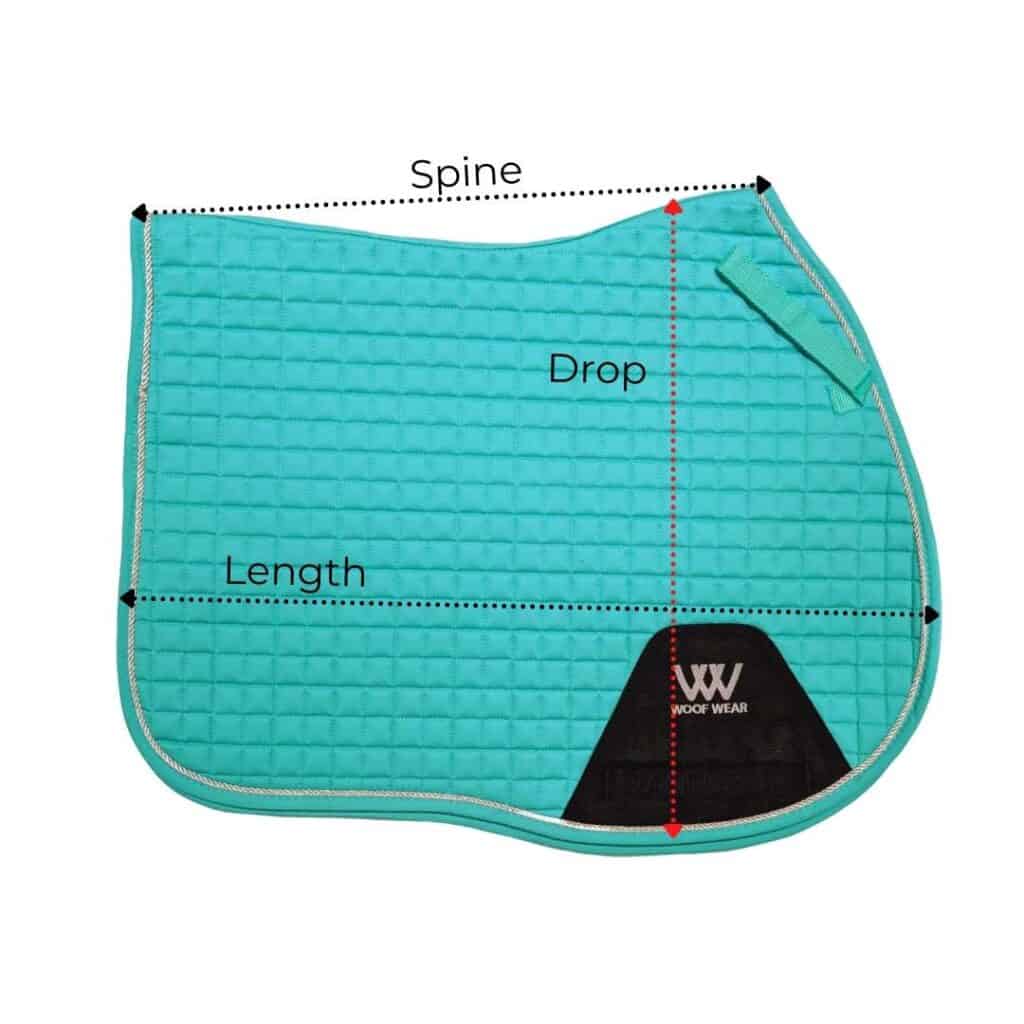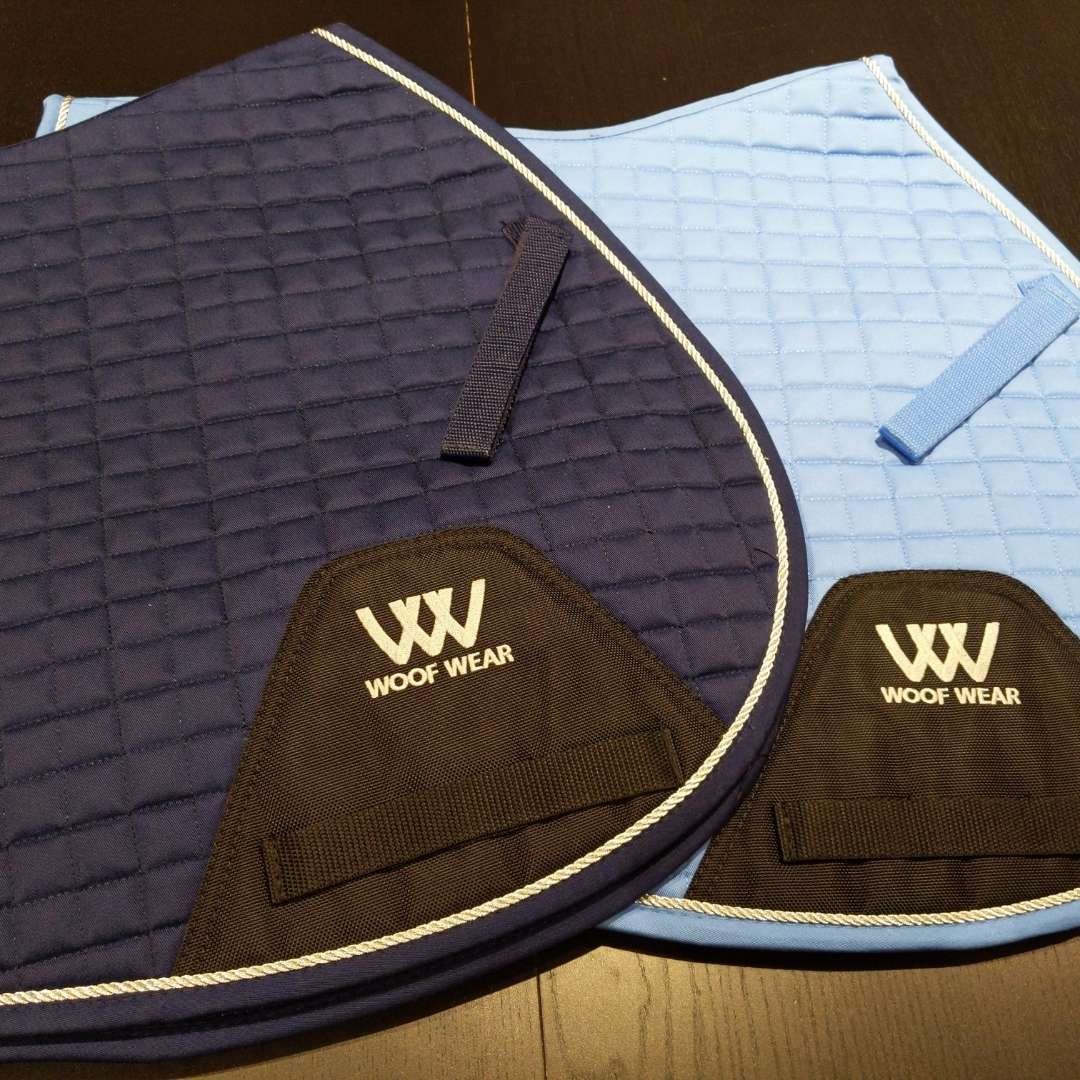Canada-wide flat shipping $9.99 | Free shipping for orders over $100
Buying a saddle pad is not as easy as it might seem at first. There are many different types of pads available for both English and Western saddles. With the prices that vary so much, how do you know how to choose the right one for your horse and saddle? The following guide will take you through how to measure a saddle pad, how to choose between the different pads, and how to avoid buying the wrong one!
Saddle pads have been used since ancient times to protect saddles and horses. They act as a barrier for dirt, cushioning for the horse, and as a sweat absorber.
They are made out of different types of material, including fleece, wool, felt, and animal hair. There are also sheepskin pads that you can buy in various colors, lengths, and thicknesses. Choose your saddle pad styles based on how your horse sweat, style of riding, and how much protection is needed.
For trail riders, comfort for the horse and moisture-wicking are the most important criteria you’ll want to look for.
Before we go any deeper into our saddle pad buying guide let’s talk about saddle pads, let’s make sure we are speaking the same language. Below is a diagram of a saddle pad with the appropriate terms. You may want to refer to this later.

There are dozens of different types of pads, each with its own purpose and benefits. For instance, a fleece pad is designed to wick away moisture from your horse’s back while still providing some cushioning for the saddle. A neoprene pad offers similar benefits but also protects sharp objects. To adapt your saddle pad purchase to your saddle, you’ll first need to know the dimensions of your saddle and what type of saddle you have.
Measurements are important when it comes to buying a new saddle pad. You want the pad that will best fit your horse’s back so they can be comfortable and happy being saddled and working. There are some basic measurements you need to take for the right pad to work. They include the length of your saddle from the front of the saddle all the way to the back along the spine, making sure to measure all the parts that are in contact with the horse’s back (don’t stop at the pommel!) and add 6 cm; the drop can be measured from inside you saddle from the spine to the bottom of the flap, then add 6 cm here too.

Let’s talk saddle pad thickness. A thin saddle pad should be enough to wick away moisture and protect your saddle from dirt if your saddle is fitted properly.
If your saddle does not fit right, get a saddle fitter – not a thicker saddle pad or half pad! If you don’t believe me, take some else’s high heels and put on a thick woolen winter sock. Then take a long walk in the shoes and socks. You’ll probably have sore feet at the end. Get the shoe – erg, saddle – fitted and an appropriate saddle pad.
Should your horse need more cushioning, and you want to add a half pad, check with your saddle fitter first to see if there is enough room. Simply adding a half pad on top of your saddle pad can create other issues, similar to our sock experiment.
This doesn’t mean don’t ever use a saddle pad with shims. It just means use it intentionally, with the support of a saddle fitter, so that you don’t damage your horse’s back.
Now that you have the measurements of your saddle and know what to avoid, you’ll need to take a close look at the curve of your horse’s topline to buy the appropriate saddle pad. For a high withered horse, you will need to buy a saddle pad with a pronounced curve in the spine to ensure that the pad doesn’t wrinkle and bunch at odd spots under the saddle, causing discomfort. In short, the curve of your horse’s back should approximatively match the curve of the saddle pad’s spine.
Once you have your new saddle pad, check to make sure you have the right size. Here are a few pointers:
Here at Equestrian Next Door, we know that buying a saddle pad is not as easy as it might seem. There are many different types of pads available, and the difference in prices can be staggering! How do you know how to choose the right one for your horse? Follow our saddle pad buying guide below on measuring a saddle pad and choosing between various pads, all while avoiding making mistakes with purchasing the wrong type for your horse or saddle.
